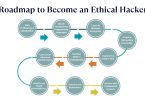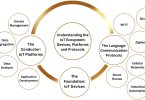The first traceable reference to blockchain was attributed to its role in creating the most notable currencies. With its transparent architecture designed for a decentralized system, Blockchain technology seems to have an immense potential to dismantle some key business areas, or at least disrupt them by 2024; following, we outline 10 blockchain network trends that will change transactional procedures and data security.
However, they foreshadow a revolutionary period in the information technology sector. The use of ICOs, which serves as a means of fundraising for possible crypto trading, is just but an indication of what this technology can achieve.
Blockchain Technology Trends
That’s why Blockchain network, which covers from AI influence to IoT, Metavirs and NFT is broad. The key blockchain Technology trends that will inspire scholars are discussed in our conversation.
-
NFT Renaissance
A small part in the big picture, the NFTs are proof that blockchain takes over. NFTs can be found in many fields like art, collectibles, virtual real estate among others.
One major application of blockchain technology explained is the production and distribution of NFT via platforms like Ethereum. There is a crypto trading that is innate, unchangeable, and transparent and guards the authenticity and safety of records of NFT trades and possessions. Every NFT comes with a token indicating some associated metadata that leads to the actual asset.
NFTs have been revolutionary in various sectors. Artwork can be directly tokenized for sale to collectors without involving intermediate parties. Digital assets are worth more and more genuine because blockchain verification leads to new revenue channels for content producers and influencers.
-
IoT Synergy
In reference to previous research, the blockchain IoT market with the value of $134.41 million in 2021 will develop into $19.740 billion in 2030 with a CAGR of 73.5%. They also point at an influx of automated insurance policies by combining blockchain and IoT technologies.
Also, blockchain will be an essential part of the third-generation security system. In the long term, these technologies will raise many enterprises higher than ever before offering the highest possible safety standard, increased speeds of transactions and leaner but cheaper operations of businesses.
-
Asset Tokenization
Asset tokenization is digital representation of real assets in the form of tokens in the blockchain mining. The division of these assets includes, but is not limited to, real estates, works of art, commodities and intellectual property rights into small parts or blocks. However, tokens are then used as representations of ownership or partial ownership in the asset and facilitate trading them on blockchain wallet. Asset tokenization is a growing trend that has been observed during this year and will also play a major role moving forward.
-
Fortification of Cybersecurity
After ransomware attacks became very prevalent, there was an urgent demand to strengthen cyber security systems, whereby blockchain acted like an enclosed wall around cryptocurrency. Incidents such as that of Equifax cyberattacks where more than 40 percent of Americas were exposed is just an example of the weakness on this basis. Therefore, the crypto apps that provides a robust framework for identifying the vulnerable points and creating secure systems can be used to
-
Convergence of Blockchain and Metaverse
Blockchain network and the metaverse have continued to generate interest as well as intense interest in development. Blockchain’s prospect of execution of safe and scattered contracts matches excellently with metaverse, which can be imagined as a fictional facticity world in which users engage with virtualized content.
-
Blockchain Interoperability
Within this blockchain context, interoperability refers to the smooth communication and working together of various blockchains with their associated digital currencies and smart agreements. This capability facilitates the frictionless exchange of information and value, enabling data and assets to traverse various blockchain platforms and protocols. In doing so, interoperability dismantles silos, fostering widespread adoption and enhancing the overall utility of blockchain technology.
For instance, interoperability allows for issuing of cross-chain-based smart contracts by facilitating connectivity between various blockchain platforms enabling developers to benefit from different characteristics and develop complicated applications connecting several systems. In 2024, it is envisaged that the acceleration of this trend will be much faster in the blockchain sector.
The new trend in the blockchain industry is BaaS. The idea is that the cloud service suppliers provide blockchain infrastructure and instruments for enterprise builders and developers to construct, deploy and operate blockchain utility. BaaS platform provides ready-to-use blockchain networks. They are accompanied by development tools, simplifying the construction as well as upkeep of an individual blockchain. They are scalable as they can easily adjust depending on varying demands. In addition, they are also compatible with different blockchain protocols, making it easy for companies to select the appropriate protocol
-
Blockchain Combined with Artificial Intelligence (AI)
One can think of a revolution in technology when talking about the convergence point of blockchain and AI. Blockchain coupled with AI can help in realizing more capabilities beyond what most people would anticipate. This is even more important when it comes to moving huge volumes of data effectively with all the associated technology being combined together. Security in blockchain technology is a critical factor that addresses the fear of sharing information among big data providers and AI creators. Such partnership enables the construction of complex machine-learning models whose aim is to provide data for artificial intelligence to gain sensibility or sentiment.
-
Stablecoins
One significant trend in the sector is stable coins which are cryptocurrencies created to maintain a stable price usually linked to fiat money or other assets. Unlike other crypto prone to volatility, stablecoins aim to minimize fluctuations, offering a more stable investment avenue.
-
Cryptocurrency Insurance
Cryptocurrency insurance, which is an emerging phenomenon in the blockchain space, functions as an insurance cover for the possible financial loss arising from theft, hacking, fraud and other risk factors linked to crypto coin possession and spending. Just like cryptocurrencies are relatively young, their insurance is also onboarded together with increased digital currency adoption. Therefore, it should be understood that even cryptocurrency insurance will not offer complete safety regarding risks from blockchain technology and traditional insurance principles will have to work together in order to develop credible solutions. This big and complicated area of business is set for further expansion into the market for Bitcoin-based products, representing an outstanding path.
Overall, the evolution of Blockchain from a cryptocurrency enabler to a multi-purpose tool portrays a time of change. Widely covering blockchain technology impact for its outlined trends in 2024 including ICO, NFT, IoT and so on. Significantly, the NFT Renaissance transforms digital asset tokenization and IoT conjunction with asset tokenization spurs market prosperity.








Leave a Comment